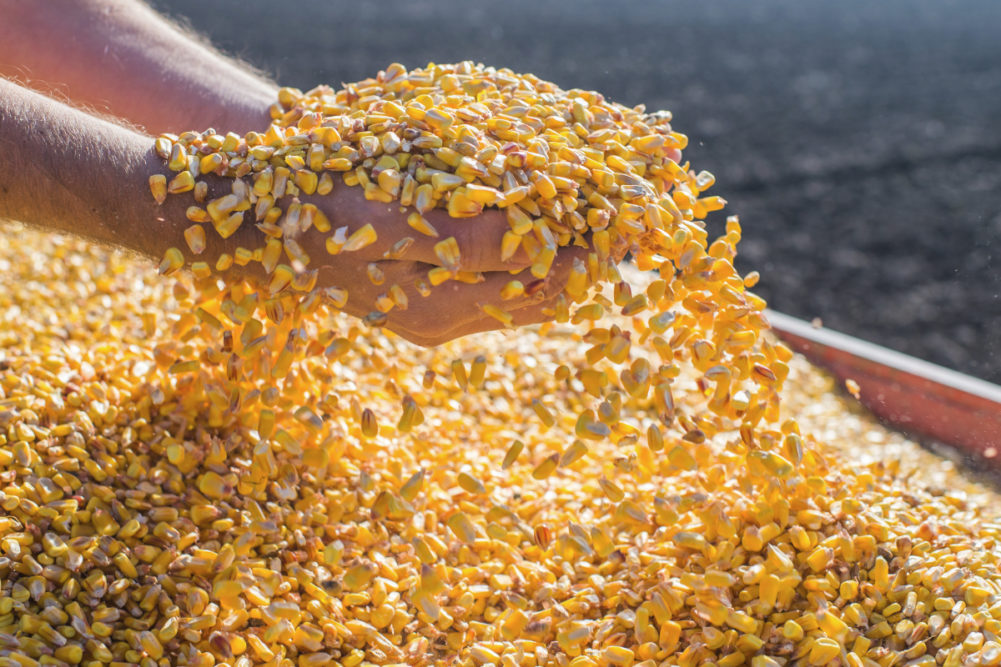Strong international demand has kept corn prices firm, despite forecast large US yields. However, a major storm in producing areas has added uncertainty, fueling predictions that production may be revised lower.
In its Market Perspectives report of Aug. 13, the US Grains Council (USGC) reported “widespread fund buying emerged following the August WASDE report,” in the corn market.
“While the WASDE confirmed record large US corn yields and large ending stocks, key technical support held firm following the report’s release, triggering technical buying and short covering,” the USGC said.
The USGC said the WASDE report put the average US corn yield at a record 11.417 tonnes per hectare, bringing 2020-21 production to 388.08 million tonnes. The USDA also increased its forecast for the world corn crop by 7.8 million tonnes, to 1.171 billion. The USGC also highlighted a 500,000-tonne increase in forecast Ukrainian production of corn and a 2-million-tonne rise for the EU’s crop, to 25 million tonnes.
“While the WASDE confirmed large US production and supplies, there are factors suggesting future estimates may decline,” the USGC said. “The first is the ‘derecho’ weather event that brought 100-mph winds to parts of Iowa, Minnesota, Illinois and Indiana.”
There were estimates suggesting that 40% of Iowa farmland had been affected.
“The event was not factored into USDA’s August WASDE as it occurred after the survey period ended,” the USGC said, citing private estimates that it could have reduced US corn production by 5 million to 10 million tonnes. A week later, in the Aug. 20 edition of its Market Perspectives report, the USGC said of the corn market that “producers have been aggressive sellers on the recent rally, selling both any lingering old crop stocks as well as making new crop sales.”
“Despite the increase in farm sales, basis has remained largely steady or higher as strong export demand has left exporters and grain elevators needing to buy grain,” the USGC said.
In its Aug. 14 Feed Outlook Report, the USDA’s Economic Research Service (ERS) reported that “growing conditions were largely mixed across most of the Northern Hemisphere,” with the department now predicting 2020-21 world coarse grains output at 1.464 billion tonnes, up 6.3 million from its previous projection.

“Foreign coarse grain production (global minus US. output) for 2020-21 is projected 2 million tonnes lower this month at 1.062 billion tonnes, though 16 million tonnes higher than a year ago,” the ERS said. “The United States coarse grain output increased 2%, with upward yield revisions for corn, sorghum, and barley.
“The largest change in coarse grain output this month is a reduction for the (EU), where persistent dryness and high temperatures in the two opposite ‘corners’ of the region, France and southeastern Romania, limit yield prospects for corn and barley. France and Romania are the two largest EU corn producers and exporters, while France is also the top barley producer.”
Romania’s corn output is projected at 12.8 million tonnes, down 1.1 million, while French corn is expected to reach 14.2 million tonnes, down 500,000 month-over-month, the ERS said.
In its July 23 Grain Market Report, the International Grains Council (IGC) said corn prices were up by 4% month-over-month, but still 8% down from the same time a year earlier.
“Brisk export activity underpinned values in South America, with more general price support stemming from a much smaller US crop figure and a consequent slightly tighter global supply outlook,” the IGC said.
Barley was up by 5% month-over-month, “despite sluggish export demand and subdued market sentiment amid ongoing uncertainty due to the sustained spread of COVID-19,” the IGC said, also citing support from Saudi Arabian buying.
For sorghum, the IGC reported US Gulf quotations down, partly because of weaker export basis levels, but added that the move was “despite some support from solid export sales to China.”
While export quotations in Argentina were unchanged, there was a fall in export quotations in Australia, “pressured by prospects for a bigger harvest amid slack export demand and stiff international export competition.”
Chris Lyddon is World Grain’s European correspondent. He may be contacted at: chris.lyddon@ntlworld.com.






